So, you’re in the market for an off-road travel bike but can’t decide between a Husqvarna 701 Enduro LR and a Yamaha Tenere 700? Well, you’re in luck.
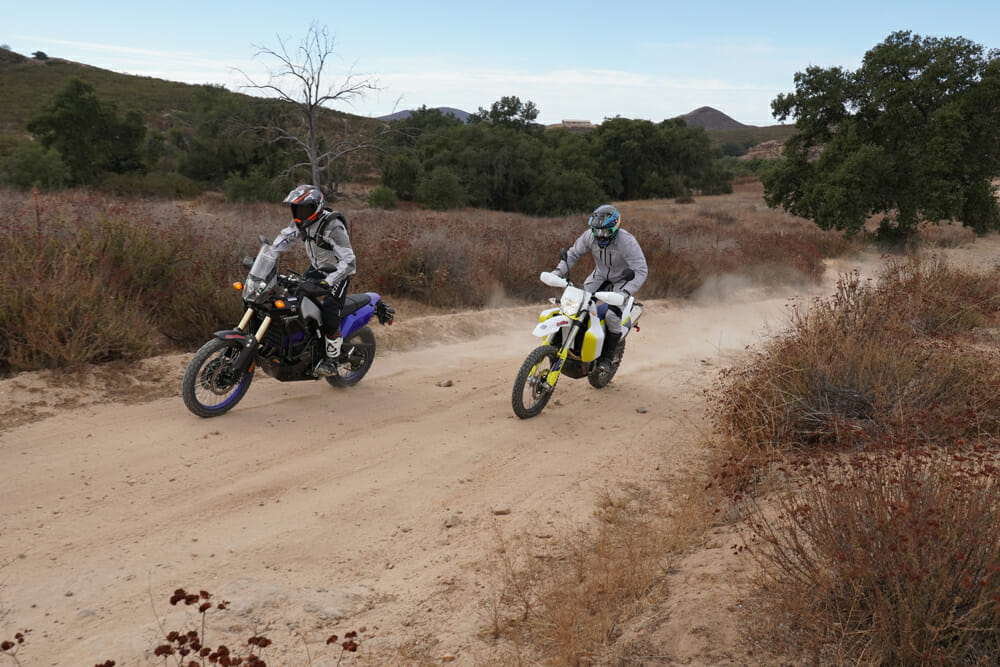
By Rennie Scaysbrook and Jesse Ziegler
Now the dumpster fire of 2020 is behind us, we can look forward to the future with renewed vigor—hopefully behind a set of shiny new handlebars. The past 12 months have really brought into focus what’s important in life and traveling the world by motorcycle is now more than ever a must-have in one’s existence. Once the borders reopen.
There’s an enormous cast from which to choose your next travel partner, but we thought we’d go down a different route for this comparison test. Instead of getting a BMW 1250 GSA or a KTM 790 Adventure, we thought we’d throw the splendid Yamaha Tenere 700 against one of the stalwarts of long-distance off-roading in the Husqvarna 701 Enduro. And seeing as Husqvarna USA has committed to bringing the Long Range (LR) version to our deserts/forests/mountains, that’s what we’ve got for you today.
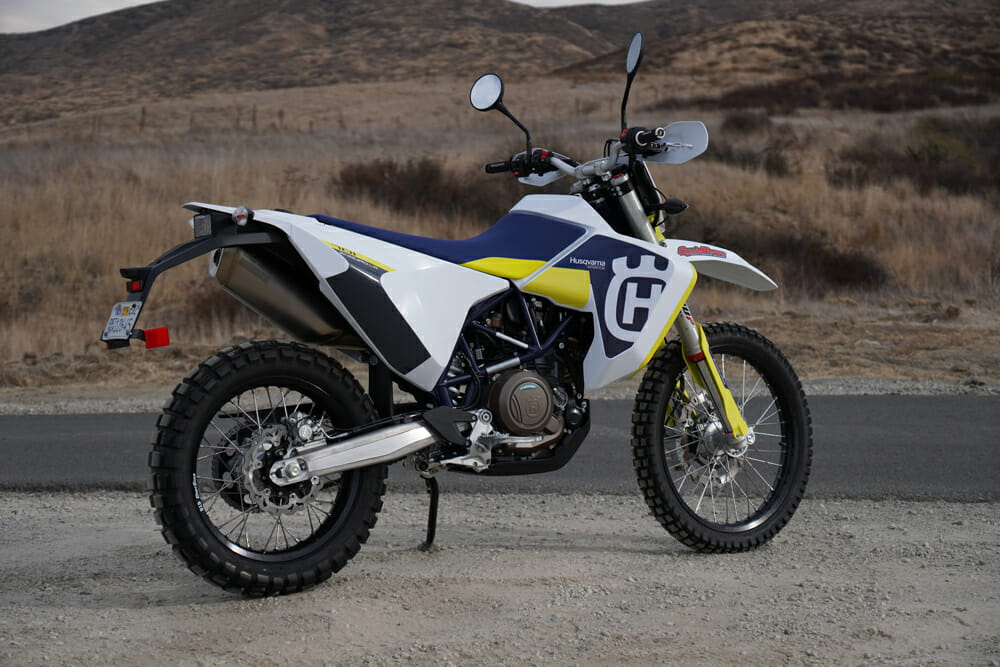
Yamaha Tenere 700 vs. Husqvarna 701 Enduro LR
In the White Corner: Husqvarna 701 Enduro LR
The 692cc Husqvarna 701 Enduro has only been around since 2015, two years after KTM purchased the then Swedish off-road company. Its development—along with pretty much every Husqvarna since—centered around using KTM parts, and the 701 Enduro (and Supermoto) quickly carved out a niche as the largest-displacement dirt bikes you could buy, using the previous-generation KTM 690 Duke motor as its beating heart.
In 2017, the 701 series was revamped with KTM fitting the same motor from the previous year’s 690 Duke, and aside from this LR version, has remained largely unchanged ever since.
That’s not to say the $12,499 701 LR is lacking in the technology department. Far from it. Running 21-inch front and 18-inch rear wheels, the 701 comes with all the fancy stuff like an Adler slipper clutch, two-channel ABS brakes, traction control, variable riding modes, ride-by-wire throttle, and, importantly, dual gas tanks that give it a massive 6.6-gallon fuel capacity (that’s only 1.3 gallons less than a BMW 1250 GS Adventure), with Husqvarna claiming a whopping 300-plus miles of possible gas mileage. All this in a package that weighs 382 pounds with a tank full of fuel.
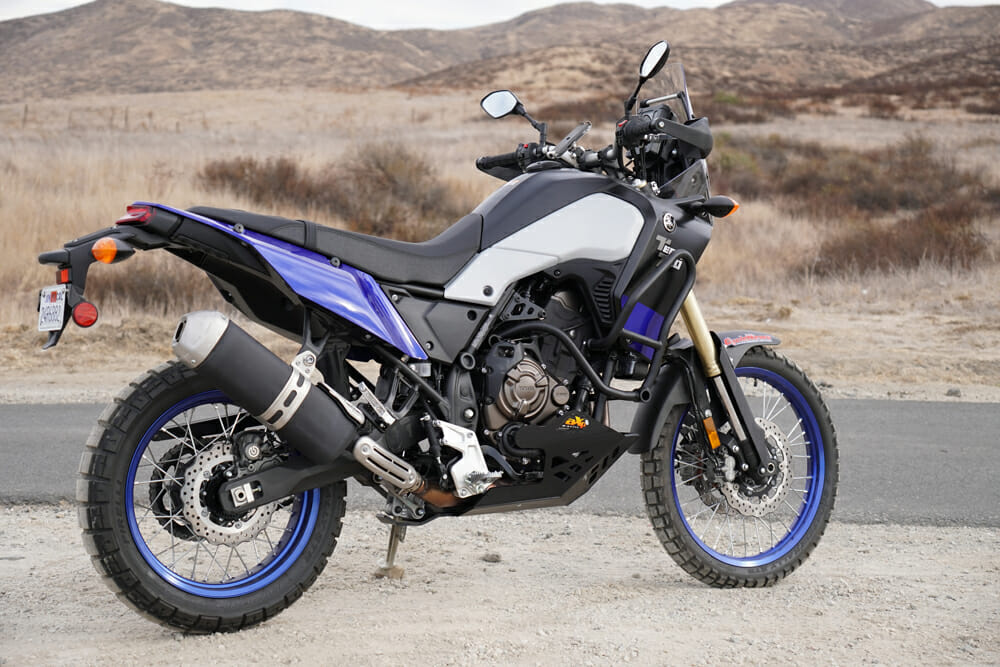
Yamaha Tenere 700 vs. Husqvarna 701 Enduro LR
In the Blue Corner: Yamaha Tenere 700
The Yamaha Tenere 700 was like this unicorn bike that refused to come to market for years. We first saw what looked close to a finished product way back in 2017, and we unfortunately had to wait longer than almost every country in the rest of the world to get the model stateside.
But the wait has so far been worth it. The Tenere 700 uses the same 689cc CP2 crossplane crank, twin-cylinder motor seen in the Yamaha MT-07 and XSR700, both machines that have become roaring commercial successes.
The Tenere is a little different from the current adventure category in that it doesn’t play much into the tech game. In fact, it could be argued it doesn’t at all. This is an analog machine and it’s a matter of what the Tenere 700 doesn’t have that makes it interesting. There’s a cable throttle and clutch, no traction control, no slipper clutch, no cruise control, with the only real electronics coming in the form of the fuel-injection system and the switchable ABS. This is an adventure bike designed so it can be fixed by the majority of the world’s ADV riders in the middle of nowhere. Break your throttle cable? A bit of ingenuity and some wire, and you’re good to go.
A thorn in the Yamaha’s side is its rather small gas tank, which measures 4.2-gallons. Yamaha claims this will get you roughly 215 miles on a tank, but you’d want to be looking for gas after 160 miles to be on the safe side.
It does, however, run twin disc/caliper front brakes and rolls on a the same 21-inch front and 18-inch rear wheel setup as the Husqvarna.
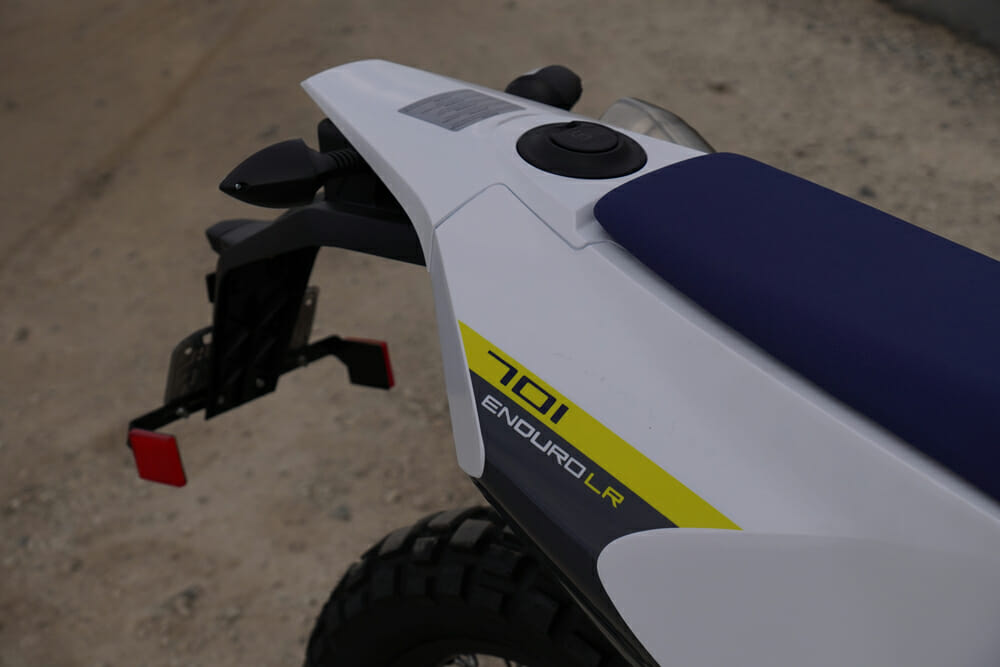
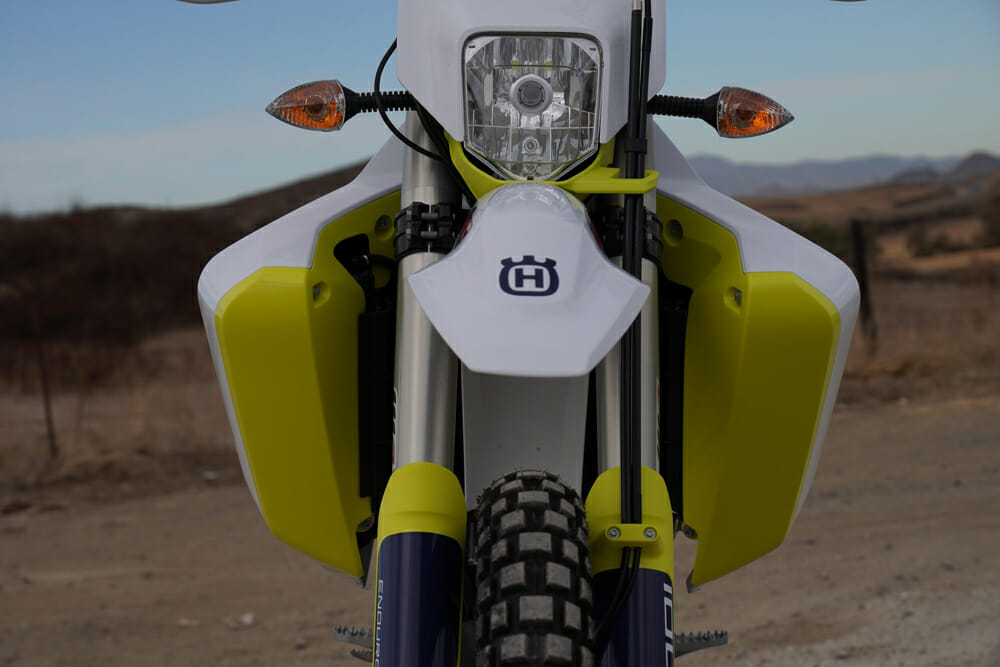
Yamaha Tenere 700 vs. Husqvarna 701 Enduro LR
In Practice
We’ll admit that these two are slightly odd motorcycles to stick together in a comparison test, but despite appearances and certain specs, they are aimed at roughly the same riders. At first glance, you’d be forgiven for thinking the Husqvarna was going to walk this test, and for some riders it might, but you need to consider all the terrains ADV riders undertake on a given expedition.
A big single-cylinder motor may be great for tight single track, but what about on the roads required to get to said single track? And a twin might be better for off-road touring, but what of its chops when the terrain gets really technical?
Considering the massive 105mm stroke, the Husqvarna’s motor is remarkably close to vibration free. Old, large-capacity singles used to rattle the rider’s teeth out, whereas now the Husqvarna is an exercise in smoothness. Part of this in due to the ride-by-wire throttle compared to the Yamaha’s old cable system, allowing the 701 rider to dial in minute throttle applications that work well for really tight terrain.
Get the Husky’s single really spinning in the higher revs and you’ll get a fair bit of pulsing through the bars and pegs, but by that stage all the decent power is gone. Keep the single low in the revs, let it chug from corner to corner—or over rock to rock—and you’ll be sweet.
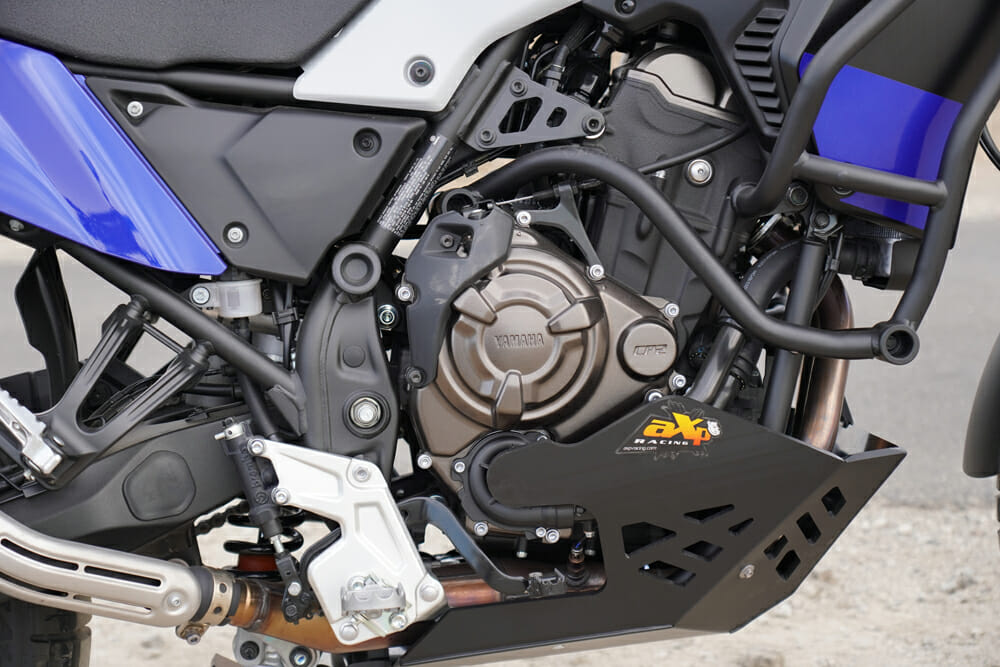
The Yamaha, on the other hand, has one of the nicest throttle responses from any twin-cylinder machine on the market. It’s fair enough, too, as the company has had years to get this right in the MT-07 and XSR700. The Yamaha is equally at home in fireroads as it is highways and doesn’t get left too far behind the Husqvarna when it comes to really tight terrain. The throttle is delightfully metered, with a near perfect level of low-down torque for most ADV situations, and the wider overall spread of torque makes for a far better road engine than the Husky (it’s just a shame the gas tank is so small).
An area the Husqvarna shines is the fact that it has a slipper clutch, which is more useful on dirt roads than anywhere else. Get some decent speed up on any dirt back road and you’ll be glad the Husky’s got a slipper in its pocket. The Yamaha requires a more analogue approach, matching the revs correctly to stop the rear tire from locking up/chattering and pushing you wide on corner entry—the Husky’s clutch is something you’ll appreciate when you take into account the full weight of the 6.6 gallons of gas.
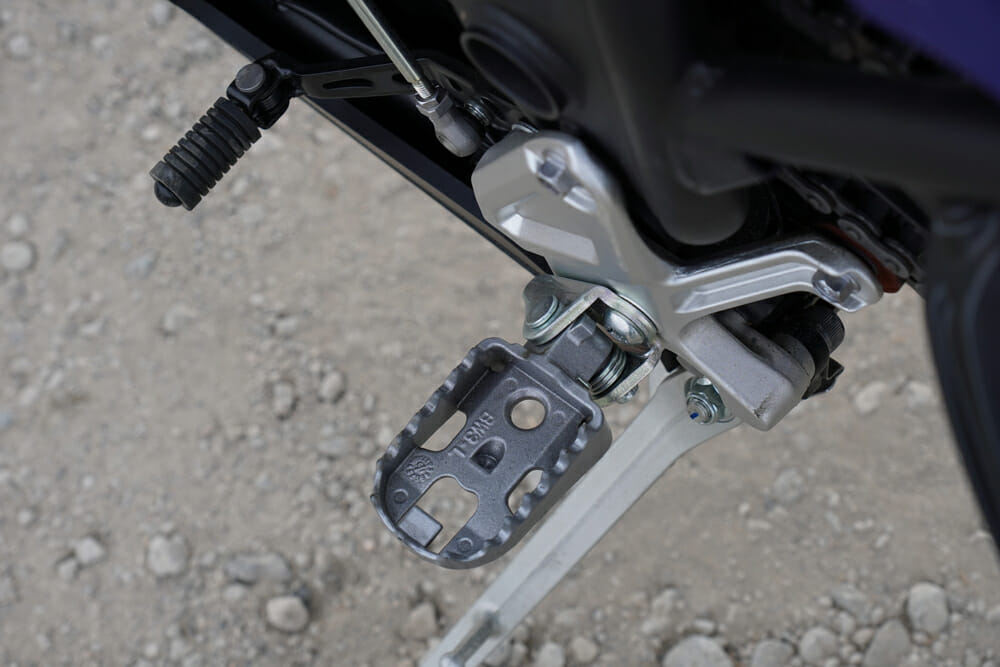
Yamaha Tenere 700 vs. Husqvarna 701 Enduro LR
One Size Fits All?
The Husqvarna’s 36.4-inch seat height is a full two-inches higher than the Tenere, but both Jesse at 5’10” and myself at 6’1” felt the Husky’s ergonomics were too cramped and it wasn’t comfortable to stand for long periods of time.
We attribute this to the narrow-width handlebars mounted lower overall, which results in a shorter gap between the seat and the pegs. For a machine with 1.5-inches more front wheel travel and two inches more at the rear than the Yamaha, it feels rather odd.
The Yamaha, despite having less ground clearance and skinnier, softer-sprung forks (43mm to the Husqvarna’s chunky 48mm legs), is far more comfortable for longer periods in the saddle thanks to the Yamaha’s wider-stance bars and a seat that’s is more comfortable. And with a decent length to the pegs, this helps the rider stretch out more and give tired muscles a needed break.
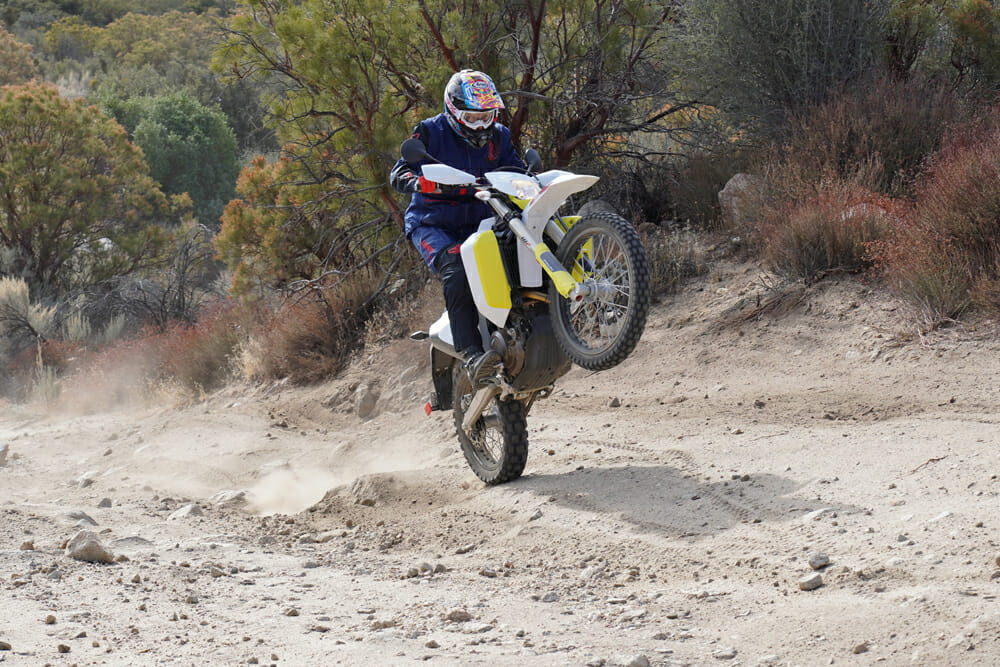
The big elephant in the room is the near 90 pounds the Yamaha carries over the Husqvarna in wet weight. You’d think this would be the death knell of the Yamaha, and for a portion of riders considering either of these bikes it would be. However, the Yamaha holds its weight so well and is so balanced you soon forget about the disparity.
The Tenere is one of those bikes born exceptionally well, in that it’ll do pretty much anything the Husqvarna does but with more comfort. It struggles to match the Husqvarna in the tightest of terrain, but everywhere else we thought the Yamaha excelled.
Another area where the Yamaha was better than the Husqvarna was in crash protection and luggage points. If you’re going to faraway places, you’ll want to bring a few supplies and the Yamaha at least has some good tie-down points on the back of the seat whereas the Husky doesn’t have any.
The same can be said for the substantial side-crash protection of the Yamaha and the large engine guard. The Husqvarna’s tanks, while made from ultra-hard plastic, are vulnerable in a crash and the Yamaha looks like it could be thrown off a building and it’ll still be okay to ride.
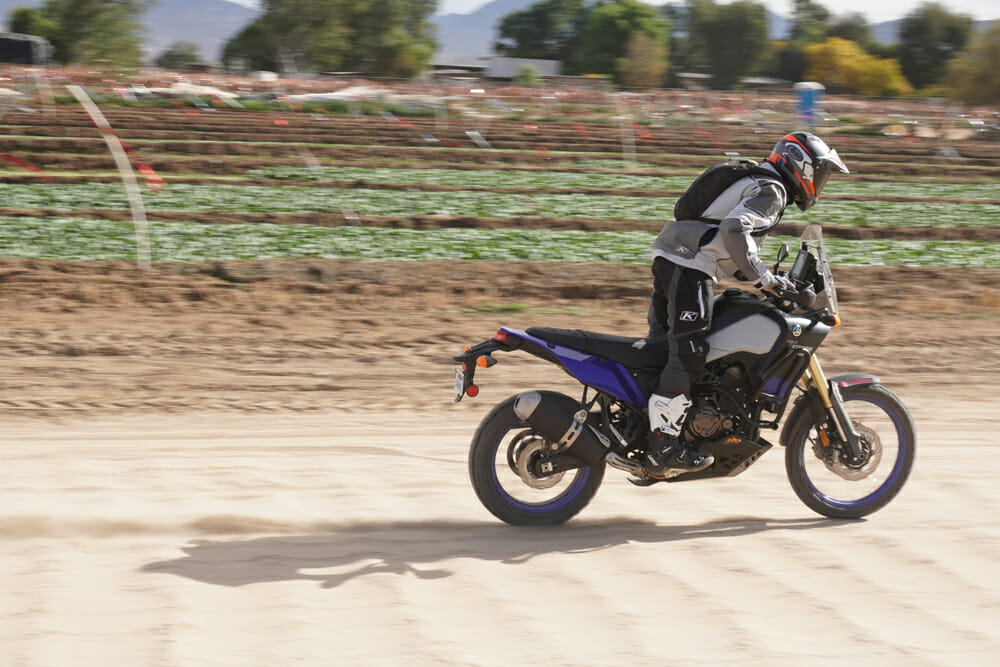
Yamaha Tenere 700 vs. Husqvarna 701 Enduro LR
Jesse’s Take
I almost hate to make some comparisons in the motorcycle world. They have consequence! Not for anything incredibly important but there are people who have fallen in love with some machines and it’s hard to tell them their baby is ugly.
To me, that baby is the Husqvarna 701 LR, but it’s not ugly in a visual sense to me (maybe it is to some). No, I kind of like the bulbous tank out front—reminds me of my old Honda XR650R and a five-gallon Acerbis tank. I loved that bike. But it wasn’t better at being an ADV bike as the Yamaha Tenere 700. And it wasn’t as good of a dual-sport/trail bike as a modern KTM 500 EXC is. I can admit that. But I still like to think my XR650R was the super awesome-est. And it is when I factor nostalgia and coolness, for sure. I can’t pretend I’m Johnny Campbell on a KTM EXC or Tenere 700.
And this is where my KTM 690/Husqvarna 701 platform dilemma rises and gets ugly. This bike has been a Swiss army knife of a bike that has tools in it I don’t really need. It’s the master of nothing, to me. But it works so well at the fringe, it has hooked many into its gaze.
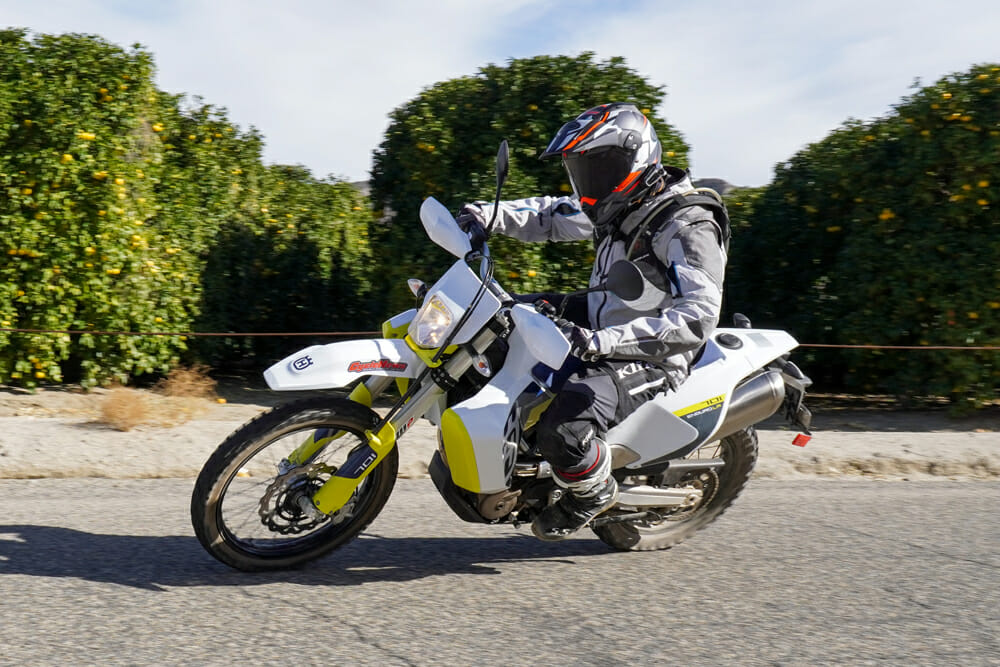
My favorite bikes I’ve ever tested in this family have been heavily modified to basically be rally bikes with big fuel tanks up front and a rally screen for wind protection. Essentially, these bikes are turned into single-cylinder Yamaha Tenere 700s with the rally good looks and comfort to match thanks to a seat upgrade.
But if stock, even with the extra range of that new tank, the Husqvarna 701 LR still doesn’t have a solid home going long. It’s a great bike to sit and spin on dirt roads, and it can handle more technical off-road just fine with a smooth motor and relatively narrow chassis, but it is a compromise in most directions if you only own one bike. Zero wind protection limits it to fun on shorter stints only. To me, this single belongs in a lightweight ADV chassis similar to the Tenere 700 with a few more electronic benefits. Then, we have a competitor that I can get behind and be excited about. As it sits as a big dirt bike, I’m still all—meh.
On the other hand, the more I ride and test and live with the Yamaha Tenere 700, the more I see it as one of the best ADV bikes released this decade. It has comfort across the board and motor magic for beginners and advanced riders alike. It has a nearly perfect power delivery for all terrain I like to ride with torque and fun on tap. Plus, it rides smaller than it is and feels great—only getting heavy with a full tank of fuel and a tip-over or moving it around obstacles on my toes. It has ample suspension until pushed deep into the stroke, and it has zero electronic hiccups possible. I think it’s limited in fuel range a bit and, adding a bigger tank (please don’t, Yamaha) will only make the handling significantly worse. So, Yamaha, leave this bike alone for a while, please. ~Jesse Ziegler
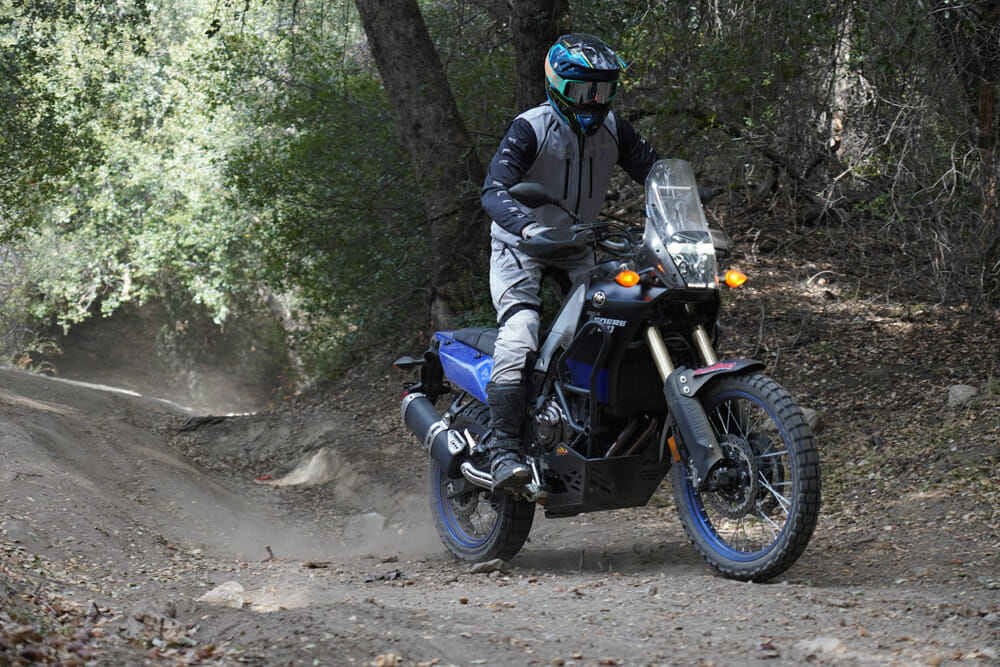
Yamaha Tenere 700 vs. Husqvarna 701 Enduro LR
The Verdict
In the end, both Jesse and I felt the Yamaha was the better option. The Husqvarna will suit a certain type of rider, one who either wants to go desert crossing or hit up some gnarly single track, but we also think for the money charged, you’d be better off getting a KTM 500 EXC-F and fitting a larger tank to it for better off-road performance at a cheaper price.
The Yamaha’s win comes down to its versatility. If you’re going riding, chances are you’re not riding straight out of your house and onto your chosen terrain. The Yamaha may lack a little compared to the Husky when the going gets really tough, but for everything else it’s either on par or better than the more off-road-focused Husqvarna. CN
VIDEO | Yamaha Tenere 700 vs. Husqvarna 701 Enduro LR
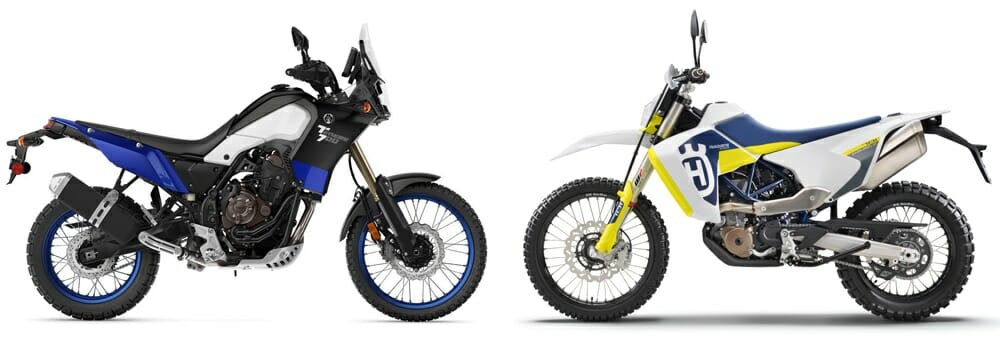
Yamaha Tenere 700 / Husqvarna Enduro 701 LR Specifications
| MSRP: | $9999 / $12,499 |
| Engine: | 4-stroke, inline twin / 4-stroke, single |
| Valvetrain: | DOHC, 8 valves / DOHC, 4 valves |
| Cooling System: | Liquid / Liquid |
| Displacement: | 689cc / 692cc |
| Bore x stroke: | 80 x 68.6mm / 80 x 105mm |
| Compression ratio: | 11.5:1 / 12.6:1 |
| Fuel system: | EFI / EFI |
| Exhaust: | 2-1 / 1-1 |
| Clutch: | Wet multi-plate / Wet multi-plate, slipper |
| Transmission: | 6-speed / 6-speed |
| Front suspension: | 43mm inverted fork, fully adjustable / 48mm inverted fork, fully adjustable |
| Rear suspension: | Monoshock, fully adjustable / Monoshock, fully adjustable |
| Front-wheel travel: | 8.3 in. / 9.8 in. |
| Rear-wheel travel: | 7.9 in. / 9.8 in. |
| Front brake: | Dual 282mm discs, 2-piston caliper, ABS / Single 300mm disc, 2-piston caliper, ABS |
| Rear brake: | 245mm disc, 1-piston caliper, ABS / 240mm disc, 1-piston caliper, ABS |
| Front tire: | 90/90R21 Pirelli Scorpion Rally STR / 90/90R21 Pirelli Scorpion Rally STR |
| Rear tire: | 150/70R18 Pirelli Scorpion Rally STR / 150/70R18 Pirelli Scorpion Rally STR |
| Wheelbase: | 62.8 in. / 59 in. |
| Seat height: | 34.4 in. / 36.4 in. |
| Fuel capacity: | 4.3 gal / 6.6 gal. |
| Weight (wet): | 470 lbs. / 382 lbs. |
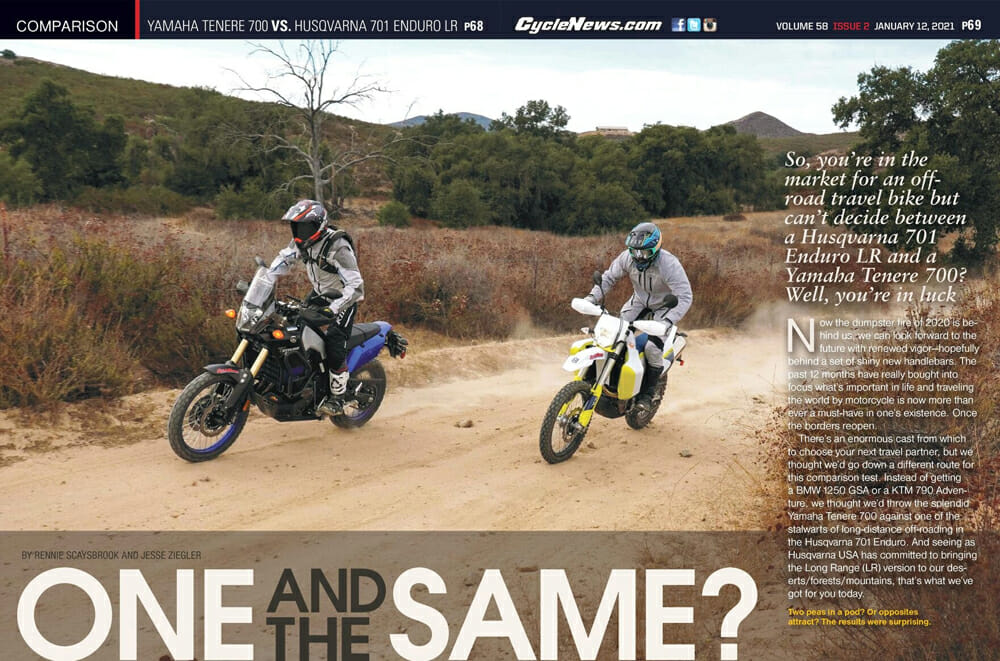
Click here to read the Yamaha Tenere 700 vs. Husqvarna 701 Enduro LR article in the Cycle News Digital Edition Magazine.
Click here for the latest Cycle News Adventure motorcycle reviews and news.
Click here for the latest Cycle News Dual Sport motorcycle reviews and news.
Click here for more Husqvarna motorcycle reviews and news.
Click here for more Yamaha motorcycle reviews and news.
January 17, 2021 at 02:38AM
https://ift.tt/3bItI9n
Yamaha Tenere 700 vs Husqvarna 701 Enduro LR - Cycle News
https://ift.tt/2ZqQevw
Yamaha

No comments:
Post a Comment